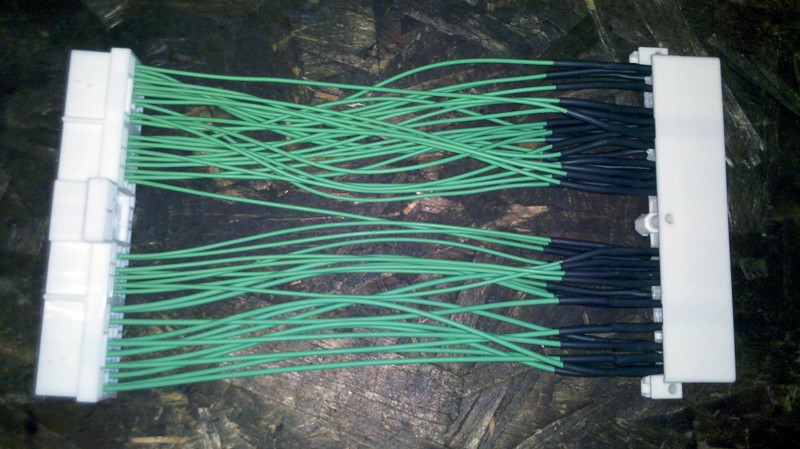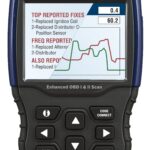For enthusiasts of the Nissan SR20 engine, modifications and performance upgrades are often top of mind. One common area for enhancement is engine management, and that’s where the discussion of OBD2 to OBD1 conversion comes into play. If you’re navigating the intricacies of engine control units (ECUs) for your SR20DET or similar engine, understanding the role of an OBD2 to OBD1 jumper harness can be crucial. This article dives into what these harnesses are, why they’re used, and how they can benefit your engine tuning and performance goals.
Understanding the OBD2 to OBD1 Conversion
The terms OBD1 and OBD2 refer to different generations of On-Board Diagnostics systems in vehicles. OBD1 was the earlier standard, while OBD2 is a more advanced and standardized system mandated in the United States starting in 1996. For older Nissan SR20 engines, particularly those originally designed for pre-1996 vehicles, the ECU system is typically OBD1.
However, many modern tuning solutions and engine management systems are designed to interface with OBD1 ECUs. This is where the need for an OBD2 to OBD1 jumper harness arises. Essentially, this harness acts as an adapter, bridging the wiring differences between an OBD2 vehicle harness and an OBD1 ECU.
Alt text: Prototype OBD2 to OBD1 jumper harness showcasing new connectors and wiring, essential for Nissan SR20 engine modifications.
Why Use an OBD2 to OBD1 Jumper Harness?
The primary reason for using an OBD2 to OBD1 jumper harness is to enable the use of an OBD1 ECU in a vehicle that originally came with an OBD2 system. This conversion is often sought after for several key reasons:
- Access to Advanced Tuning Options: OBD1 ECUs, despite being older technology, are often favored in the tuning community. Many standalone engine management systems and aftermarket tuning solutions are designed to work with OBD1 systems. Converting to OBD1 can unlock a wider range of tuning capabilities and allow for more customized engine management.
- Simpler ECU Management: For some engine swap scenarios or older vehicles being retrofitted with newer engines, sticking with an OBD1 ECU can simplify the wiring and integration process. OBD1 systems can be less complex to work with for certain modifications.
- Cost-Effectiveness: In some cases, utilizing an OBD1 ECU with a jumper harness can be a more cost-effective solution compared to trying to adapt or tune an OBD2 ECU for high-performance applications.
Features of a Quality OBD2 to OBD1 Jumper Harness
When considering an OBD2 to OBD1 jumper harness, especially for a critical application like engine management, quality is paramount. Key features to look for include:
- New Connectors and Wiring: A high-quality harness will utilize brand new connectors and wiring. This ensures reliable connections, minimizes the risk of electrical issues, and provides longevity. Avoid harnesses that use recycled or low-grade components.
- Proper Pin-out Configuration: The harness must be meticulously designed with the correct pin-out configuration to ensure seamless communication between the vehicle’s wiring harness and the OBD1 ECU. Incorrect wiring can lead to serious engine damage or malfunction.
- Durable Construction: The harness should be constructed to withstand the harsh under-hood environment of a vehicle. Look for harnesses with protective sheathing and robust connectors.
Alt text: Successful installation of a new OBD2 to OBD1 jumper harness within a Nissan SR20 engine bay, highlighting clean wiring and integration.
NismoTronic and the OBD2 to OBD1 Jumper Harness
Companies like NismoTronic are at the forefront of providing tuning solutions for Nissan SR20 engines. The OBD2 to OBD1 jumper harness often integrates seamlessly with NismoTronic’s NEMU (Nissan Engine Management Unit) tuning package. This combination allows users to leverage the power of the NEMU system on engines that may have originally come with OBD2 ECUs.
By using a quality OBD2 to OBD1 jumper harness in conjunction with a tuning solution like NismoTronic NEMU, SR20 enthusiasts can gain greater control over their engine’s performance, optimize for modifications like turbo upgrades or different fuel injectors, and ultimately unlock the full potential of their engines.
Choosing the Right Jumper Harness for Your SR20
When selecting an OBD2 to OBD1 jumper harness, ensure compatibility with your specific SR20 engine model and ECU. It’s always recommended to source your harness from reputable vendors specializing in SR20 performance parts or engine management solutions like NismoTronic. This helps guarantee a properly engineered and reliable product.
While the initial investment in a quality jumper harness is a factor, it’s a crucial component for those seeking to maximize tuning capabilities and engine performance with an OBD1 ECU on their SR20. By making an informed decision and choosing a well-made harness, you can ensure a smooth and successful OBD2 to OBD1 conversion for your vehicle.


